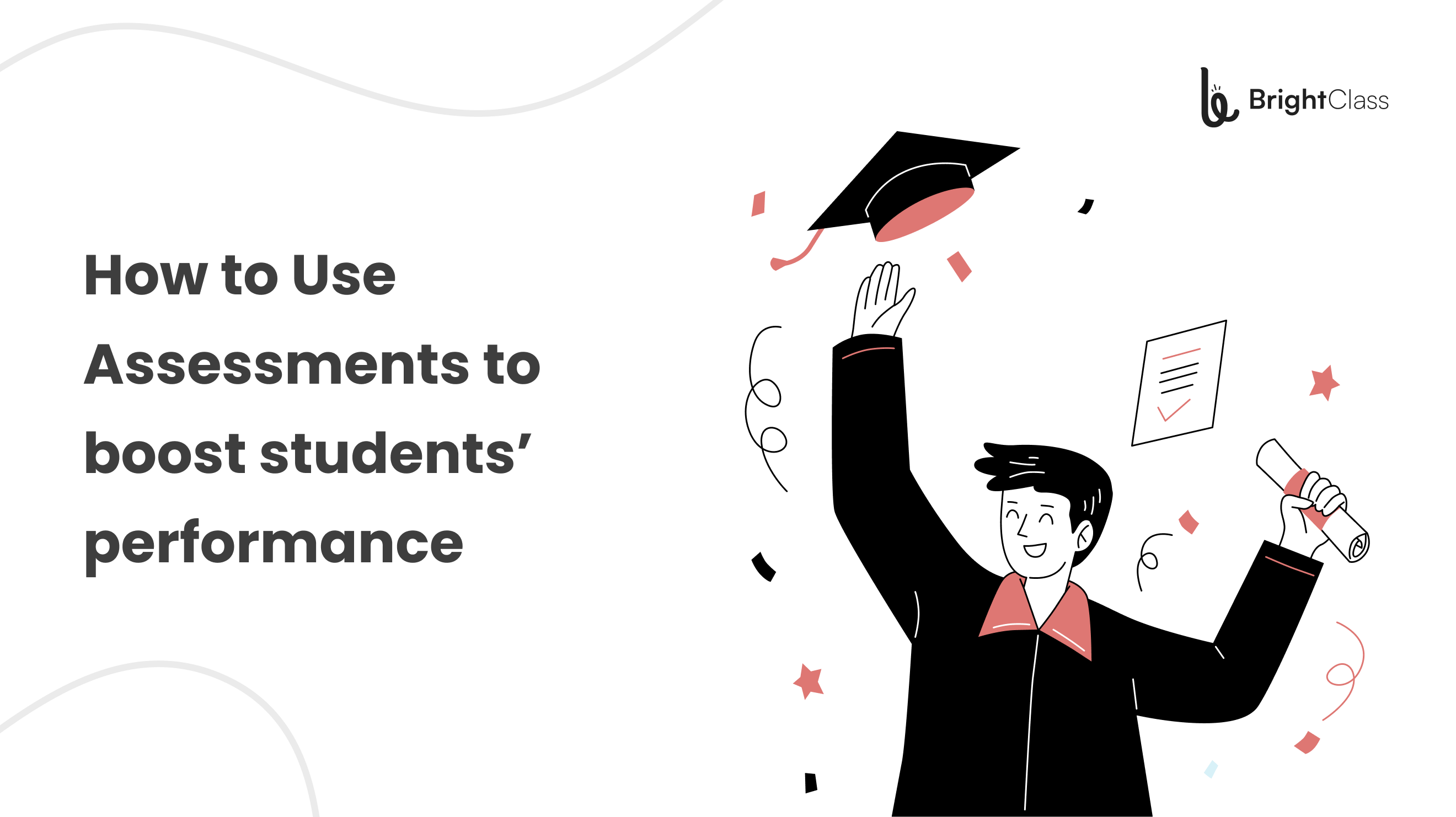
How to Use Assessments to boost students’ performance
To gauge students knowledge of standards, educators employ a range of assessment methods, and they frequently involve students in deciphering and interpreting their own assessment results. To grade, report, promote, and graduate students, assessments create a body of evidence that needs to be shared with the community, district, state, and other relevant parties.
Students are regularly involved in interpreting and analysing their own assessment data, and teachers and leaders employ a range of assessment forms to test students mastery of standards when they use teaching software like BrightClass. Teachers evaluate the success of curriculum, instruction, and school-wide structures like timetables, academic groups, and intervention programmes using high-quality assessment data, both formative and summative. Lastly, assessments offer evidence that needs to be shared with the community, district, state, and other stakeholders for grading, reporting, promotion, and graduation.
Teachers can design and schedule high-quality classroom assessments to obtain an accurate picture of students learning throughout the year and to prepare them for interim assessments and high-stakes standardised examinations. Teachers can use test data analysis using classroom software like BrightClass to create action plans, modify lessons, and establish improvement targets. Additionally, students evaluate their data, apply it to pinpoint successful techniques, and share their findings and objectives with families.
A. Selecting or Formulating Quality Evaluations
Teachers can implement or create high-quality tests to get timely,
accurate, and relevant data regarding student's learning. These
consist of formative and summative evaluations (e.g., paper and
pencil exams, written assessments available whenever needed,
performance evaluation assignments, and online interim assessments).
Instructors plan backward to determine the assessment sequence used
to examine student's knowledge of ideas and skills gradually and
repeatedly over the year, aligning assessments with the necessary
requirements.
As part of their initial planning for a unit, teachers create main assessments, which they then test-drive to ensure they effectively measure and fit with intended learning outcomes.
Teachers can choose the assessment method that best fits the subject matter they are evaluating (for example, performance activities to assess skills and multiple choice to evaluate factual knowledge). Teachers work together to develop or select standard tests for important concepts or abilities. The reporting of student competency and uniformity is enhanced by common assessments.
B. Getting Students Ready for Exams
To help students comprehend the relationship between learning objectives and assessments, teachers ensure they are aware of the goals and outcomes of the various assessment methods.
Teachers can scaffold their instruction to help students develop their knowledge, abilities, and reasoning—such as cognitive processes like analysis, interpretation, and problem-solving. They assist students in recognizing trends and significant concepts related to the subject matter.
Teachers can employ formative assessments, also known as assessments for learning, to help students become accustomed to summative assessment tasks, also known as assessments of learning, and to strengthen their ability to appropriately evaluate their progress towards learning objectives. Teachers promote effective study techniques, such as creating study groups with peers, text-coding notes, using mnemonic devices, and using flashcards. Instead of preparing pupils for a single exam right before it is administered, teachers prepare them for standardised assessments throughout the academic year. Teachers can quickly create assessments using teaching software like BrightClass and publish them for students to attempt and know their progress.
To help students react to these formats—which include writing
prompts, multiple-choice questions, and demonstrating reasoning in
science and mathematics—teachers assist students in analysing the
formats used on standardised examinations. AI-assisted BrightClass
teaching software can help teachers generate multiple test formats.
Instructors provide well-planned practice exams to help students
become more comfortable with the test's structure, timing, andmechanics.
C. Using Student Assessment Data
To help students comprehend how academic tasks reflect mastery of aims, teachers ensure that relevant learning targets are posted on assignments and, where applicable, on assessments. Instructors assist students in tracking their progress towards learning objectives and analyze assessment data independently.
Students often examine their performance on examinations and related tasks to identify patterns, strengths, and challenges. To record their discoveries, they could have data notebooks or folders.
Students create goals for their learning and decide how to get there based on the results of assessments. Advanced teaching software like BrightClass generates reports based on the data and suggests to students a strategy to cope with the lagging subjects.
D. Using Assessment Data to Drive Student Achievement and School Improvement
Teachers examine assessment results both alone and in groups. They
carefully and purposefully use assessment data to find trends in
students' answers to test questions. This approach supports teachers
in assessing, modifying, and differentiating their education. It
also drives curriculum mapping and lesson design.
To help teachers implement and analyze assessments, school administrators offer professional development. Teachers and school administrators develop or choose interim evaluations closely connected to mandated standards and standardised tests to benchmark student progress towards end-of-year goals. They ensure interim exams are as rigorous as final exams after the semester or year.
Educators and leaders explain the aim and significance of
standardised examinations. Thanks to this data, they assist parents
and children in realising that teachers can modify the curriculum
and instruction to suit each student's needs as they advance through
the grades.
Data analysis is a routine aspect of the school improvement process for leaders and leadership teams. They use it to record progress and accomplishments, set targets, and draft improvement action plans.

